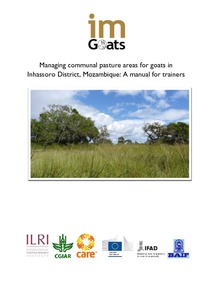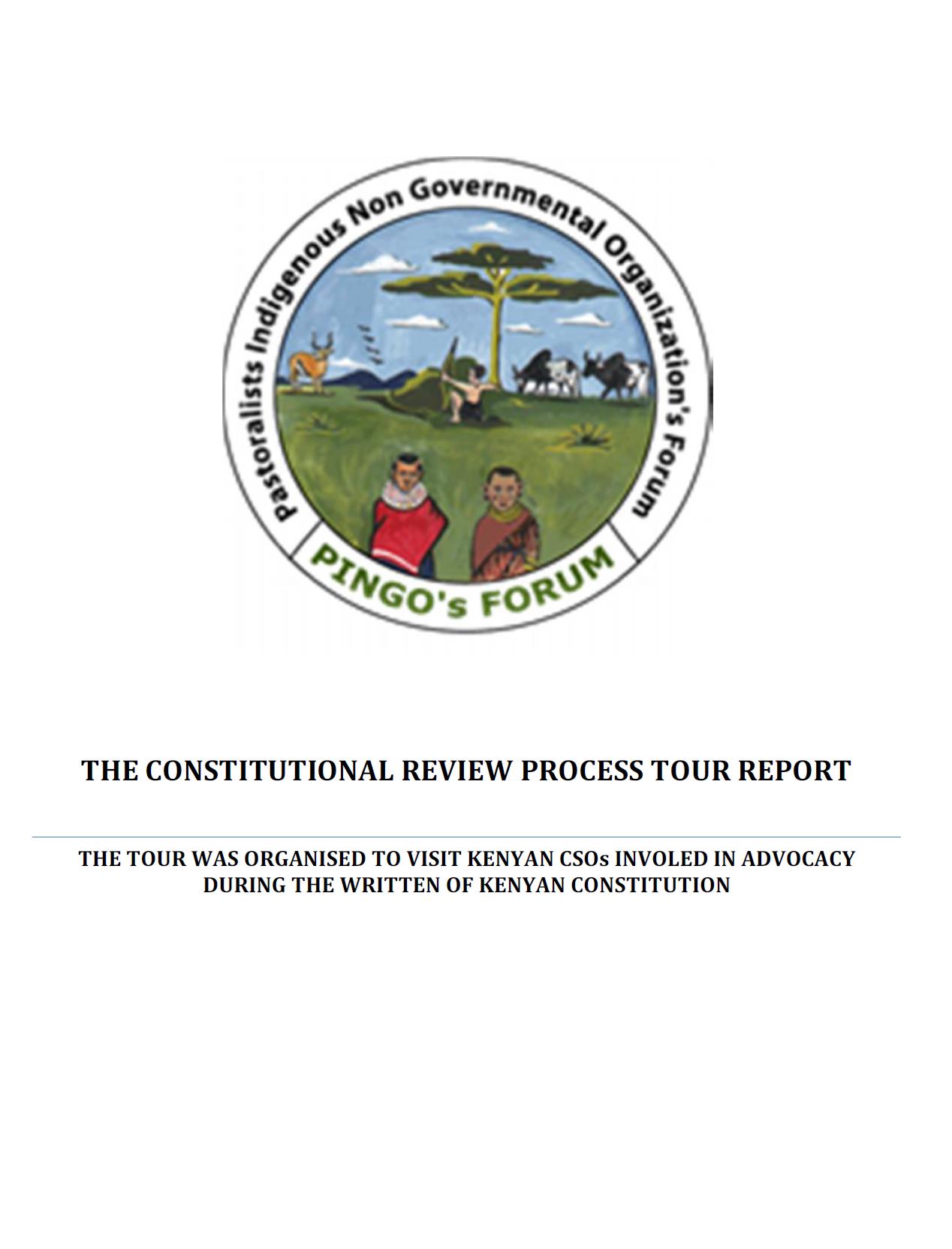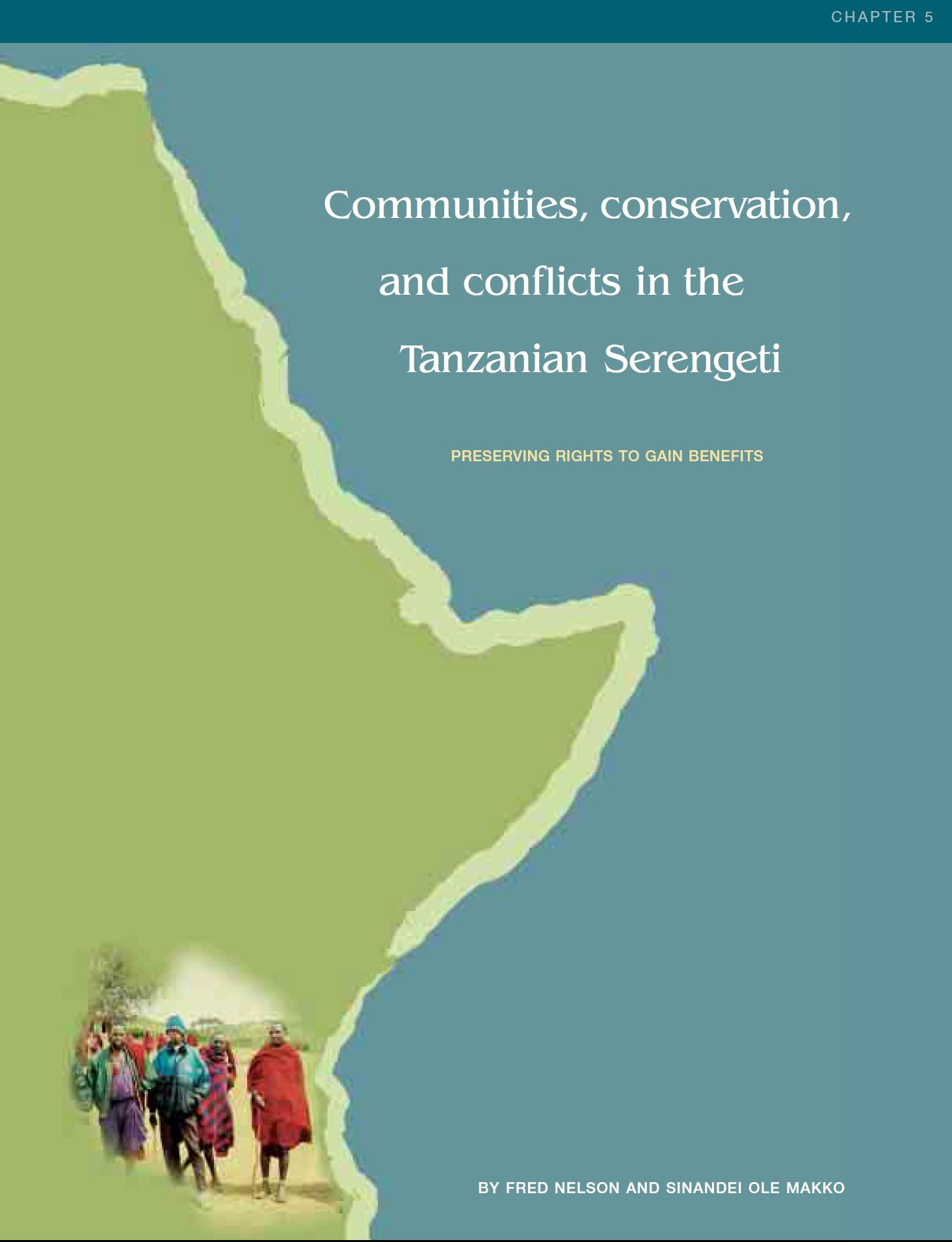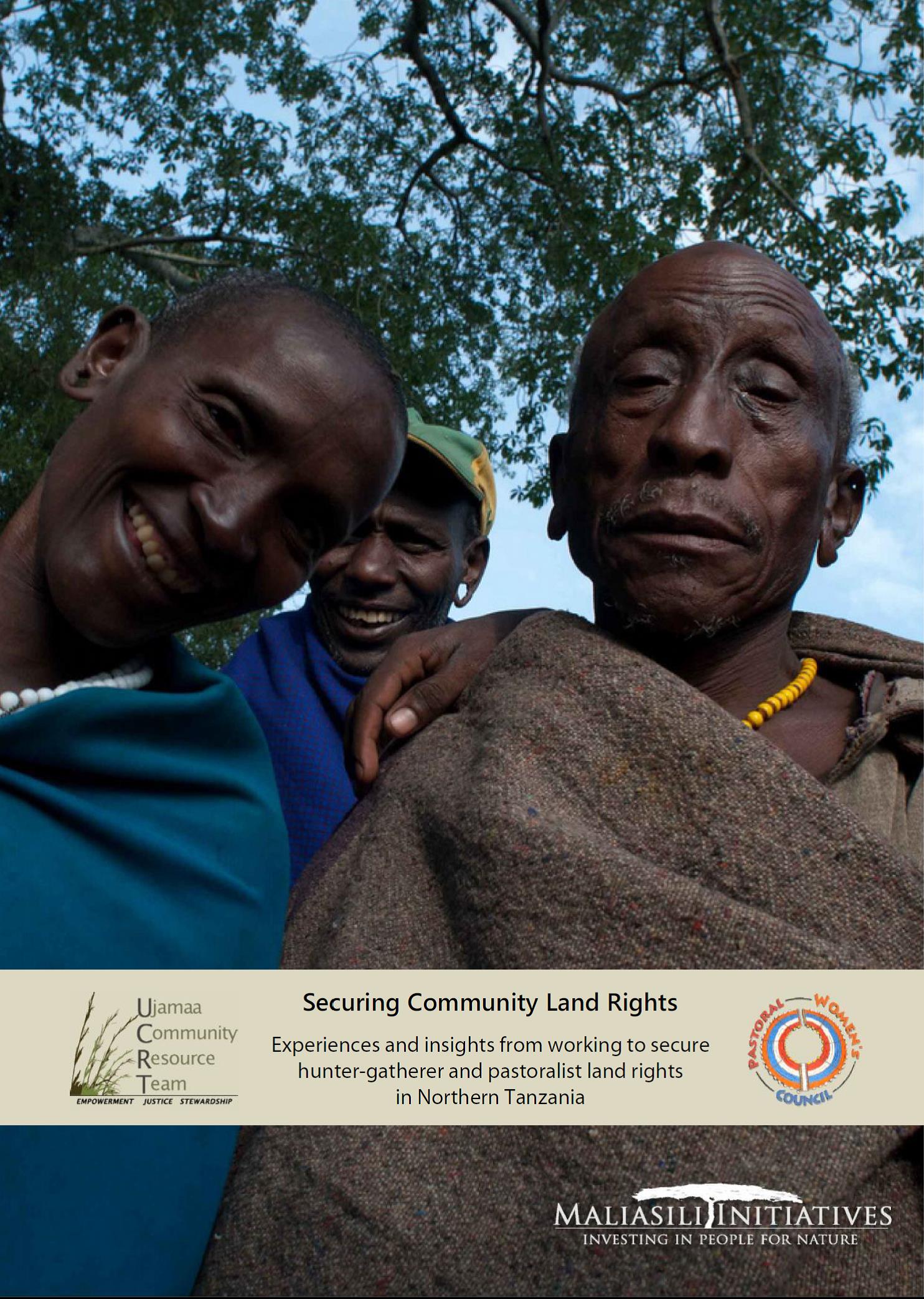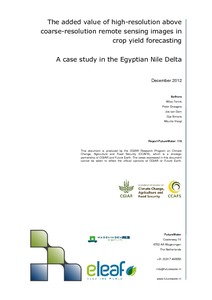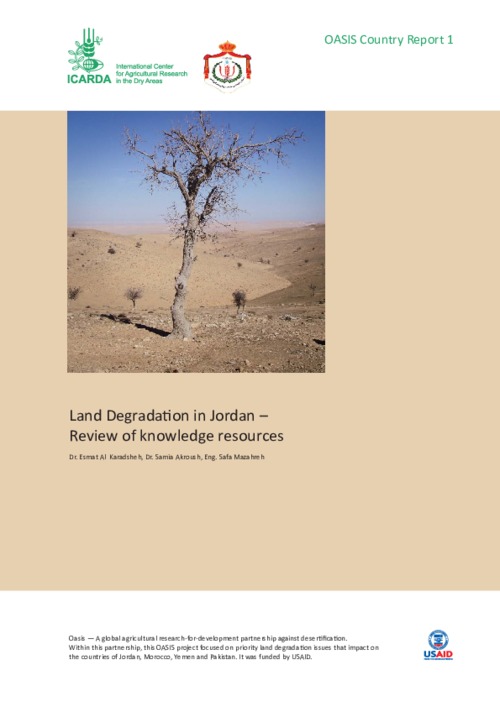Managing communal pasture areas for goats in Inhassoro District, Mozambique: A manual for trainers
The European Commission-funded project, Small ruminant value chains as platforms for reducing poverty and increasing food security in dryland areas of India and Mozambique (imGoats) aims to increase incomes and food security in a sustainable manner by enhancing pro-poor small ruminant value chains in India and Mozambique. The project is implemented by the International Livestock Research Institute (ILRI) in collaboration with BAIF Development Research Foundation in India and CARE Mozambique.
The Constitutional Review Process Tour Report
This trip report includes key essential areas which were core areas of the tour; aim of the tour, list of organization visited and brief explanation about them, key issues of their advocacy, method they had applied, their experience, success, challenges and lesson learnt
Communities, Conservation, and conflicts in the Tanzanian Serengeti
This chapter addresses issues related to securing access and rights to resources, and gaining benefits from the resource within the context of one community-based initiative in the village of Ololosokwan in Tanzania.
Securing Community Land Rights
In this publication two pioneering grassroots organisations from northern Tanzania examine and present their experiences and insights from their long-term work to secure the land rights of hunter-gatherer and pastoral communities. The case studies were presented at a one-day learning event held on 5th October 2012, when Pastoral Women’s Council (PWC) and Ujamaa Community Resource Team (UCRT) joined together to share and reflect on their work to secure land rights, to learn from each other, and to identify ways to build on their achievements moving forward.
تقرير الدورة العشرين لهيئة غابات ومراعي الشرق الأدنى
Meeting symbol/code: FO:NEFRC/2012/REP
Session: Sess.20
Report of the Twentieth Session of the Near East Forestry and Range Commission
Meeting symbol/code: FO:NEFRC/2012/REP
Session: Sess.20
Climate change perception and adaptation of agro-pastoral communities in Kenya
Data on agro-pastoralists' perceptions of climate change and adaptation options were collected from agro-pastoral communities in 7 rural districts of Kenya. Key adaptation strategies for livestock producers include mixing crop and livestock production, destocking, diversifying livestock feeds, changing animal breeds and moving animals to other sites. Desired adaptation options include introducing new breeds and increasing herd size. Additionally, the main barriers to adaptation identified include lack of credit or savings followed by lack of access to land and inputs.
The added value of high-resolution above coarse-resolution remote sensing images in crop yield forecasting: A case study in the Egyptian Nile Delta
Crop growth models play a major role in sustaining the world-wide food security. These models are used to simulate crop growth during the growing season, and the final crop yield at the end of the growing season, given the farmers’ management practices. At a more strategic level, these crop growth models play an important role to decision makers to take timely decisions regarding food import and/or export strategies. The simulation accuracy of crop growth models relies on the quality of the input data.
Calidad de la alimentación de caprinos en un módulo agrosilvopastoril de zonas áridas
En los sistemas extensivos para la producción de caprinos en el Norte de México, existe una fuerte problemática debido a que la alimentación del ganado está sumamente restringida en los agostaderos dada a la baja disponibilidad de forraje de especies nativas como consecuencia del sobrepastoreo, aunado a las escasas lluvias que en los últimos años se han presentado en el país. El objetivo del presente estudio fue evaluar la calidad de la alimentación de ganado caprino en un Sistema Agrosilvopastoril para satisfacer los requerimientos nutricionales de los caprinos durante todo el año.
Land Degradation in Jordan – Review of knowledge resources
This publication is a baseline assessment reviewing the current knowledge of land degradation in the rangelands of Jordan - known as Badia - with a special focus on its causes. It includes a review of current legislation and on-going initiatives to combat land degradation, along with an analysis of the main constraints limiting their effectiveness.
Land and conflict: Toolkit and guidance for preventing and managing land and natural resources conflict
The five components of the toolkit - Land, Extractive Industries, Renewable Resources, Strengthening Capacity & Resource-Rich Economies - all aim to demonstrate how well-managed natural resources can prevent conflict or contribute to peace and sustainable development in war-torn nations. The linkages between natural resources and violent conflict are a critical challenge faced by many countries today.


